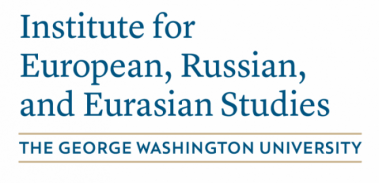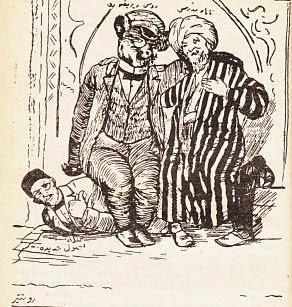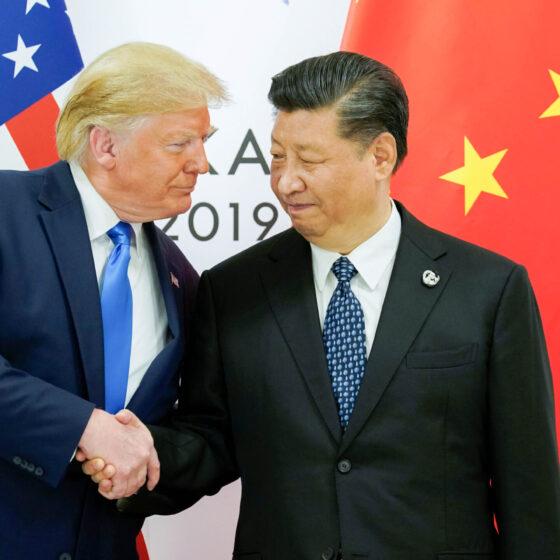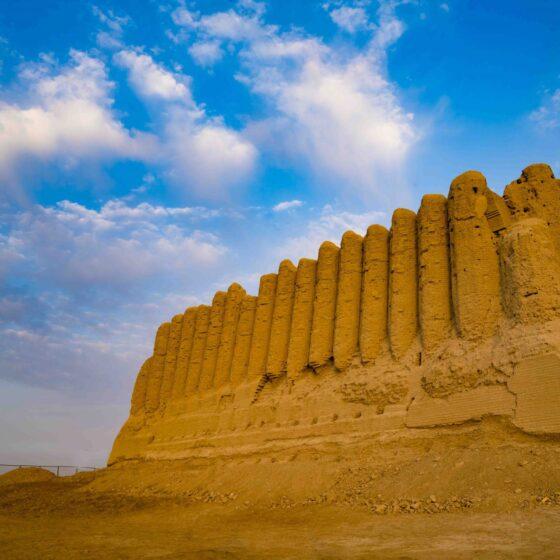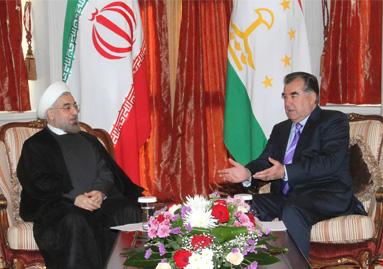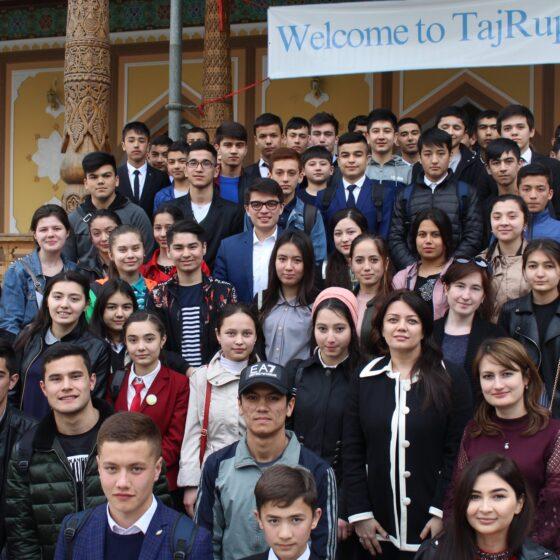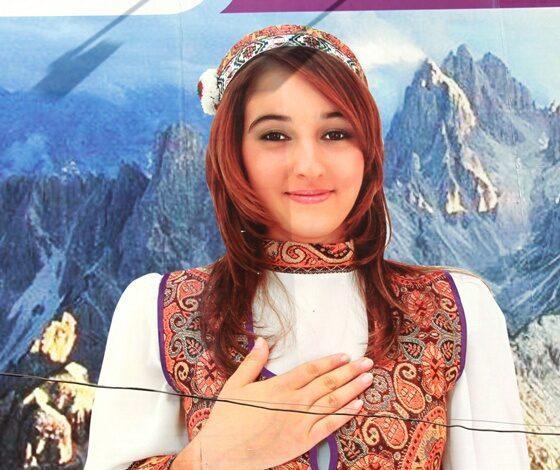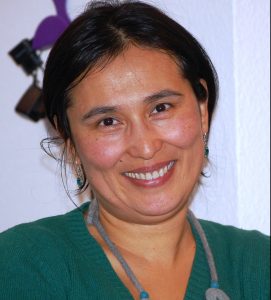
Many researchers, journalists, and sociologists talk about the rising role of Islam among post-Soviet Central Asians. Is that true for women too?
There is a missing systematic qualitative research on this important topic. As the time pressure grows with the intensification of events related to the terrorism, the number of quick analysis also grow in order to speedily offer answers to complex questions. I am an anthropologist and I have to say, I do not have right answers or quick solutions, we anthropologists need more time to understand the life practices of those ideas which are just grabbed as they are.
Central Asia is a region where predominantly Muslims live. However, Islam in Central Asia cannot be compared to Islam in other Muslim countries such as in the Middle East or South Asia. Islam in Central Asia is a post-Soviet Islam which has its own belief system, tradition, history, and development path.
After the collapse of the Soviet Union Central Asian countries took different paths with the majority remaining as authoritarian states but continuing Soviet style of governance. The attitude towards Islam has also not changed, with some minor liberal approaches in Kazakhstan and Kyrgyzstan whereas Turkmenistan, Tajikistan, and Uzbekistan suppressed Islam and took zero tolerance paths. Economic hardships drew working-age populations of Central Asia towards Russia and other countries both West and East. These developments have largely contributed to the role of Islam in the lives of people coming from Central Asia. Religion offered safe spaces for various populations including migrants, entrepreneurs, and others who feel out of the legal system of social and economic integration. Mosques offered a safe place to network, rest, socialize, feel safe, experience spirituality particularly for those who are not at home. Religion offered not only opportunities but also granted more confidence and trust to those who are devoted Muslims in times of uncertainty. However, it is difficult to measure this claimed “rise” of Islam and I also do not trust numbers on which this conclusion about this “rise” based upon. Women and Islam is a separate topic which needs a more systematic investigation and research.
If I see a woman wearing a hijab in the mosque, I do not make conclusions about her religiosity and her beliefs unless I socialize with her and share her everyday concerns, social networks, family status, and other important things for this individual. I also cannot say much when I see a woman wearing tight clothes and a miniskirt who attends the mosque every Friday unless I get to know her closer. Therefore, when analysts hurry with their conclusions about “the rising role of Islam”, I cannot deny or confirm it. I can say what I experienced and saw in the everyday lives of Central Asian nationals both at home and in Russia.
One has to always consider background information, family background, economic situation, connectedness, and the environment each and every individual finds him or herself in. In the case of migrants in Russia, both men and women face severe working and living conditions. The trouble and problems start with basics, from documents to be more or less legal, accommodation for at least sleeping, health care, human rights, discrimination, and exploitation. In order to stay safe one needs very trustworthy safety networks. The safety networks are family, then place-based networks (zemlyak) or religion based connections.
Unlike men, women are less independent in their decisions to practice Islam depending on their family status. If their husbands or a partner attend a mosque regularly, then the woman tries to stay within the rules of Islam depending also on her employment and living conditions. I saw many women attending mosques similar to men seeking for opportunities and safety, which can be found in the mosque where the majority of migrants meet. There is not a better place to meet for free and in such bigger amounts as in a mosque considering overcrowded homes and expensive cafes.
Besides practical reasons I must admit that there was more room to practice one`s religion in Russia than at home. This concerns the freedom of wearing religious cloth unless one works full time.
Women at a mosque. The picture is provided by Dr Rano Turaeva
How to define the role of religion in the life of women? Appearance, observation of rules, communication, and language, praying, fasting, going to mosques, eatery habits – how?
If I declare myself being a Muslim to a statistician, this will reflect the result of the study but does not tell anything about my belief and practices. I saw women praying and attending the mosque regularly and at the same time, they invited me to their collegial parties in nightclubs. So I guess we need not to hurry with our conclusions about the rise and rather talk about the content of the practices. If I go to hijama (religious healing with the use of cuts to suck out bad blood) performer to get healed it is not that I am believing only in Islamic healing, but it is because I cannot afford Russian or even other ethnic clinics in Russia to get medical help. The same goes for those who seek medical help from alternative healers and religious healing at home where medical services are available on papers only.
Young Kyrgyz women stated that they learned about Islam in Russia, not at home. The polemic media statements such as Muslim migrants coming from Muslim countries create a threat can then also be formulated the other way around that a not practicing Muslim migrant leaves home and becomes more religious in a liberal host country and becomes a threat for the sending country since he can radicalize his home networks as well. It is not productive to draw quick conclusions and look for parties to accuse. We need to find solutions for security problems instead of finding faults with. The right solutions are not to be found in false and quick conclusions which pop up more frequently in the media, the right solutions lie upon an in-depth understanding of the problems.
How do women come to more observance of the religion – media, relative men, friends’ circles?
The question comes from the thinking it is bad to practice religion since it leads to radicalization and therefore we want to know more about ways how people come to religion. How people learn about religion is a big one but not interesting. People learn about religion at home in case parents care about it, and in the form, the parents themselves understand the religion, schools offer general information, media offer all kinds of information of different art. The adults learn about religion depending on their social networks and the way of life each individual lives every day and his or her social environment.
Is there any difference in religiosity and acceptance of religious rules between younger, post-Soviet generation and older, Soviet women – rural and urban women – women with higher education and without?
Migrant population is young and older members of migrant families take care of the children left behind by those who go to Russia for work. This generation saw some of the Soviet life in form of education and even not depending on the age. They follow Soviet traditional Islam if given by their parents and if not they at least grew up socializing within a local tradition which has both Islamic and non-Islamic elements and the way Islam was understood during the Soviet Union.
There are definitively differences between men and women, between educated and not educated, rural and urban population regarding religiosity and practice of religion. I would not put everything into a right shelve but these distinctions are very much dependent on the context and the environment where migrants work and socialize.
An event which still remains in my mind is the experience of migrant young women and men who were about to organize a nikah at a mosque. There was a long discussion where the negotiation between their home and Russian mosque should take place and when things were solved (a brother of a future bride holding his passport spoke his agreement to the marriage of a couple which was transmitted as a video in a WhatsApp application in a mobile phone), I was invited to join their party to celebrate it with a good bottle of cognac. The point I am making here is that it all depends on how each and every practice is interpreted by individuals who practice it and not the generally accepted interpretations of Islam. This example shows that the young people for whom religious marriage mattered not because they necessarily became more religious, it was more about their communities at home, that in case they get pregnant they can claim that they were married. Why religious marriage? Because it is cheaper than going home and organizing a toy (a marriage party with more than hundred guests).
Does the religiosity provide women any additional advantages in the family, community, society, business, state affairs, etc.?
As one sees from my example of the young migrants organizing nikah, religiosity is interpreted by different people differently. I am still puzzled by one of my respondents – she smokes and lives a liberal western modern life such as wearing sexy western cloth, going to nightclubs, drinking and having different lovers and sometimes for money or favors. She stated that her dream is to find a good man who would believe in God and she would wear hijab for him and pray five times if necessary. This dream and wishes were difficult to comprehend for me in order to fit into the lifestyle she has. I asked her why it is so important, while she is very much good looking and can have any man she wants and educated enough and can even finance her life? She could not answer this question being convinced that she will only marry someone who will agree to do religious marriage with her and she will be ready to wear hijab after marriage. I do not have much space here to go into more details of this individual case which I am planning to do in my future publications.
What I can at least state that, I believe it is definitively a big capital more for women than for men to show ones religiosity which is connected automatically with trust, loyalty, holiness, God's blessing, and being/feeling protected by God. One is even afraid of someone who is religious believing that if one hurts someone who is loyal to God then God punishes the perpetrator in return. Particularly in business, businesswomen (dressed in business style women) whom I met in a mosque in Moscow believed that with Gods blessing one can be more successful. If one attends a mosque and gives alms, and let the Imam read suras from Quran for their success they will have more success than others. The interpretation of these women is very much business like and business oriented.
Does it also become a source of any additional disadvantages and problems?
Depending on where one lives there are different problems Muslims face regarding their practice of religion. Such practices include visiting mosques, wearing religious clothing, keeping religious diet, celebrating religious holidays. In Russia, much of this would not be a problem unless one needs to go to work every day and to find a job in Russia with wearing a beard or hijab will be difficult unless employment within halal businesses (religious businesses). In Central Asia, it is a bit more complex, depending on which country. For instance, in Tajikistan, it will be not advised to wear religious clothing and attend mosque regularly, as well as in Turkmenistan or Uzbekistan. Kyrgyzstan and Kazakhstan are more or less liberal in this regard; however religious freedom is not yet as liberal as it should be.
Let’s talk about hijab, which has become an important political issue. Why has everyone in the region become so obsessed with how a woman ties her scarf? Young men are more willing to marry hijabi girls, the state pressing hijabi women and do not want them to wear it even at homes, thus bringing parallels with hujum of early Soviets…
I already gave some introduction to the difference between post-Soviet Muslims and other Muslims in Islamic countries of the Middle East and Asia. Hijab-wearing came to Central Asia after the early 90s with the collapse of the Soviet Union as a popular way of presenting one`s religion. Why governments became sensitive about the new developments in the field of Islamic practices and representation? Islamic threat is in the air everywhere by now, and particularly Central Asia, the region which has been recognized as “home” of many terrorists, although I am not sure if those terrorists consider their home as a “home”. Central Asian governments use the discourse on security and terrorist threat in both ways to suppress their citizens and continue keeping their authoritarian regimes justifying all illegal actions against their own people in the pretext of Islamic threat without realizing that these measures only result in reverse reaction and contribute to radicalization of youth outside of their homes. The governments of the receiving countries fail to integrate migrants treating migration as a short-term phenomenon and pushing migrants into the shadow of informality and illegality. The absence of future prospects wherever migrants live and work increases the feelings of insecurity, hopelessness, isolation, and despair.
Marrying hijabi women is something completely different than the above discourse on security. In the times of migration and mobility, the role of women changed in terms of work and residence patterns. Mobility and migration resulted in the gender change in the region. Namely, women became more mobile which more or less liberated them from family, kinship networks and community (before, living and staying at parents house until marriage was a guarantee of purity). Economic devastation and family crises in post-Soviet space pushed more and more women and young girls into prostitution, and human trafficking also flourished. Free non-traditional lifestyles (drinking, smoking, going out late, and sex without marriage) became a norm not only outside homes (in Central Asian urban centers, and Russia) but also at home (less than outside home). This development placed new insecurities about the honor of women and their marriageability. Hijab-wearing women became more trusted than others who live modern liberal lifestyles especially in metropoles or in Central Asian urban centers unless a woman has not traveled outside of parents home before marriage. A man is convinced that if a woman strictly following Islamic rules, will be pure in the sense that she does not smoke, drink alcohol, has sex without marriage and goes out in the late evening. These women are believed to be more obeying and good mothers to their many children by the majority of men. Another attraction and not the least that a proper Muslim woman will understand and accept three more wives which became a big trend among Central Asian men, particularly Tajiks.
You said: Hijab wearing came to Central Asia after the early 90s with the collapse of the Soviet Union as a popular way of presenting one`s religion.
What is the academic/population definition of “hijab”? As in Islam, the way, for example, my grandmother and my mother tie their scarfs (simply hiding their hairs and necks) like almost all of their generation in Tajikistan and Uzbekistan, also falls under the Islamic definition of “hijab”. That’s true that the way they wear the scarf is different from what is called “Turkish style”, but it is about the styles of wearing the hijab, not the new trend, right?
Hijab is an Arabic word which means veil and in Koran, it does not refer to women`s clothing but to curtain or partition within a space.
Interpretation of hijab varies and as the term itself as hijab in Central Asia means a certain kind of veiling which is prevalent in Arabic countries namely covering not only hair but also neck, ears, and upper body part. The scarves which are worn by Central Asian women are definitively part or art of veiling, which can also be called hijab theoretically. However, we have to be clear about the local understanding of hijab, and local connotation of covering head or hair which is a symbol of marriage. Rumol has more to do with social status than with religion!
Does migration play any role in the acceptance of the religion by migrant women? Is the path the same for both migration to the Russian Federation and other countries with a bigger number of Central Asians, such as the United States for example, where we see some radicalization of young Central Asian men?
Both the West and Russia offer a more liberal environment for practicing one`s religion, particularly Russia where the biggest mosque in Europe has been built recently. Religious freedom plays an important role in the choice of religious practice and belief. I already explained some of dynamics of practicing religion abroad or coming to religion and the local interpretations of these practices above.
Radicalisation is a complicated matter which became recently not only hotly debated topic, but also a subject of academic inquiry. Radicalisation is a process of development of radical views on something and acting in the name of ideologies advanced by recruiters of the ideologies in question if it is in the name of God, race, nation or another belief. I just recently had a Facebook discussion with some authors who wrote much about radicalization and who were arguing that ethnicity matters. I said ethnicity or ethnic identity becomes relevant when this particular identity is under threat. For example, if an Uzbek feels that he needs to underline his ethnicity or nationality for whatever reasons and acts violently in the name of his ethnicity or nation, then we could argue ethnicity matters. In case a sending country advances the ideology with the name of which violence was acted, then we can also consider the country of origin as an important clue to explain the terrorist acts. Otherwise, it does not matter if it is a Christian white American shooting his own congregation, or an Uzbek driving to kill, one has to analyze the possible motives or aims and how we can know if one is radical or just angry at something. What is radical is the first question to ask since there might be different agendas behind radical views such as politically radical, religiously radical, ethnically radical or gender radical.
– Regarding religious radicalization. Is it so far only “men’s illness” or do we have any signs of it among our women too?
I would not define radicalization in medical terms – it is rather a social phenomenon, and the process does not differentiate between men or women. Although, so far we often saw the following wives of radicalized Islamic State followers traveling to Syria and Iraq among Central Asian nationals. Fighting and holding a gun can still be defined in masculine terms although Islamists find a right language for women as well.
I still would like to fall back into stereotypes and say Central Asian women are more family-oriented than others. Importance of the family and particularly for Central Asian women who value parents, and their children and having a family is important in keeping them in distance from the promises of Islamists who ask for an exchange for false promises of paradise after death with one`s lives and families. Again falling to gender stereotypes I still believe that women are more clever than men in many regards.
